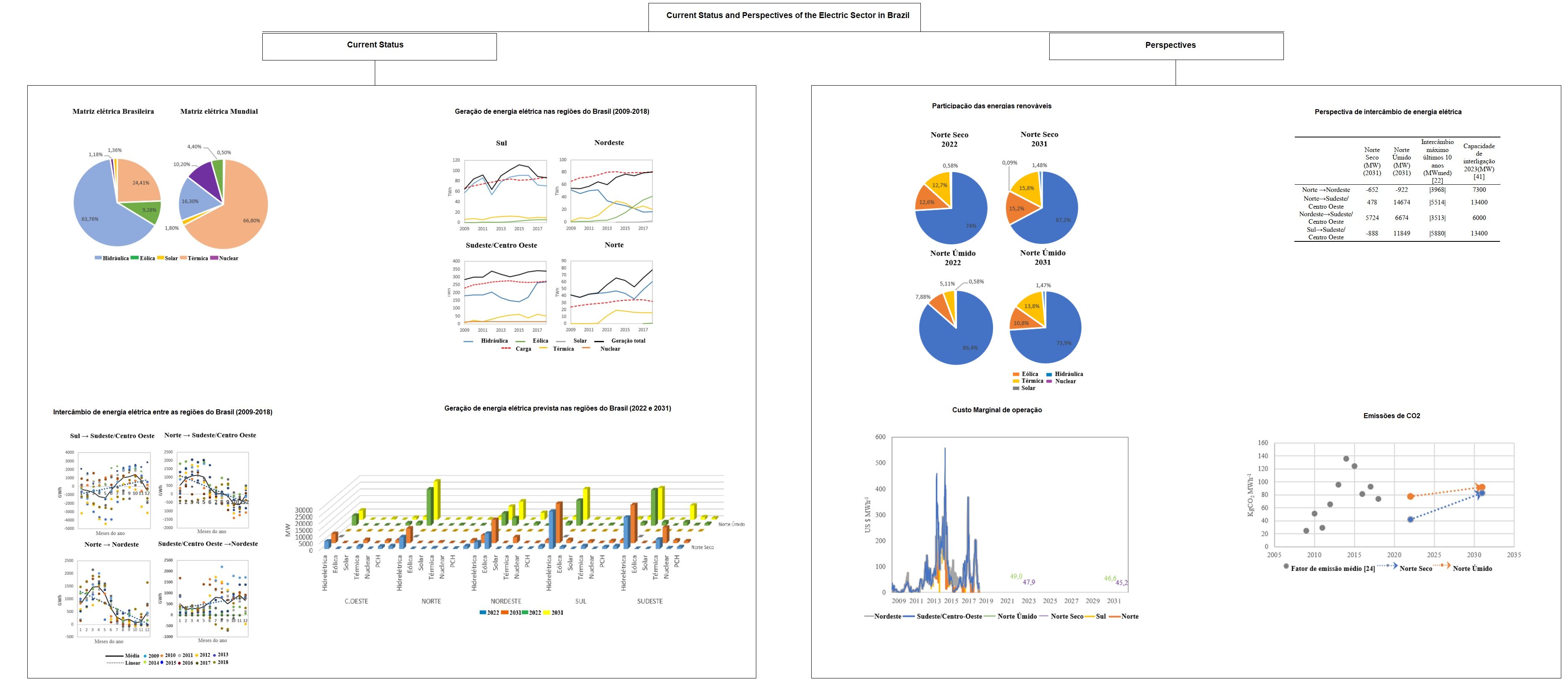Current Status and Perspectives of the Electric Sector in Brazil
Keywords:
brazilian energy scenario, electricity sector, electricity , emissions, operating costAbstract
Brazil’s demand for electricity has been increasing in recent years and most of the electric energy is generated by hydroelectric plants. The country has the most renewable electrical matrix in the world. Besides, it has one of largest installed capacities for harnessing energy from hydraulic power. This work aims to present a perspective of electric power generation in Brazil, pointing to the expected development of electricity generation in the regions, the cost of operation, CO2 emissions and the energy exchange between those regions for the extreme demand situations expected to occur in 2022 and 2031. The results for the future scenarios were obtained through simulation using the ANAREDE program. Operating cost and CO2 emissions were calculated based on referenced average indexes. The results indicate that for 2031 the active electric power generation tends to grow from 20.7 % to 25.9 %, whereas the active load will grow an average 24.7 %. The share of renewable energy in the generation of electricity tends to increase in 2022, between 86.6 % and 94.3 %, while for 2031, the trend is for stability, around 82.6 % and 84.7 %. The operating cost per MWh in the National Interconnected System (SIN) tends to decrease in the years studied. The CO2 emission rates obtained ranged from 82.6 Kg CO2 MWh-1 to 92 Kg CO2 MWh-1. The exchange of electricity between regions was similar to that found in recent years, except between the Southeast / Midwest and the Northeast.
Downloads


